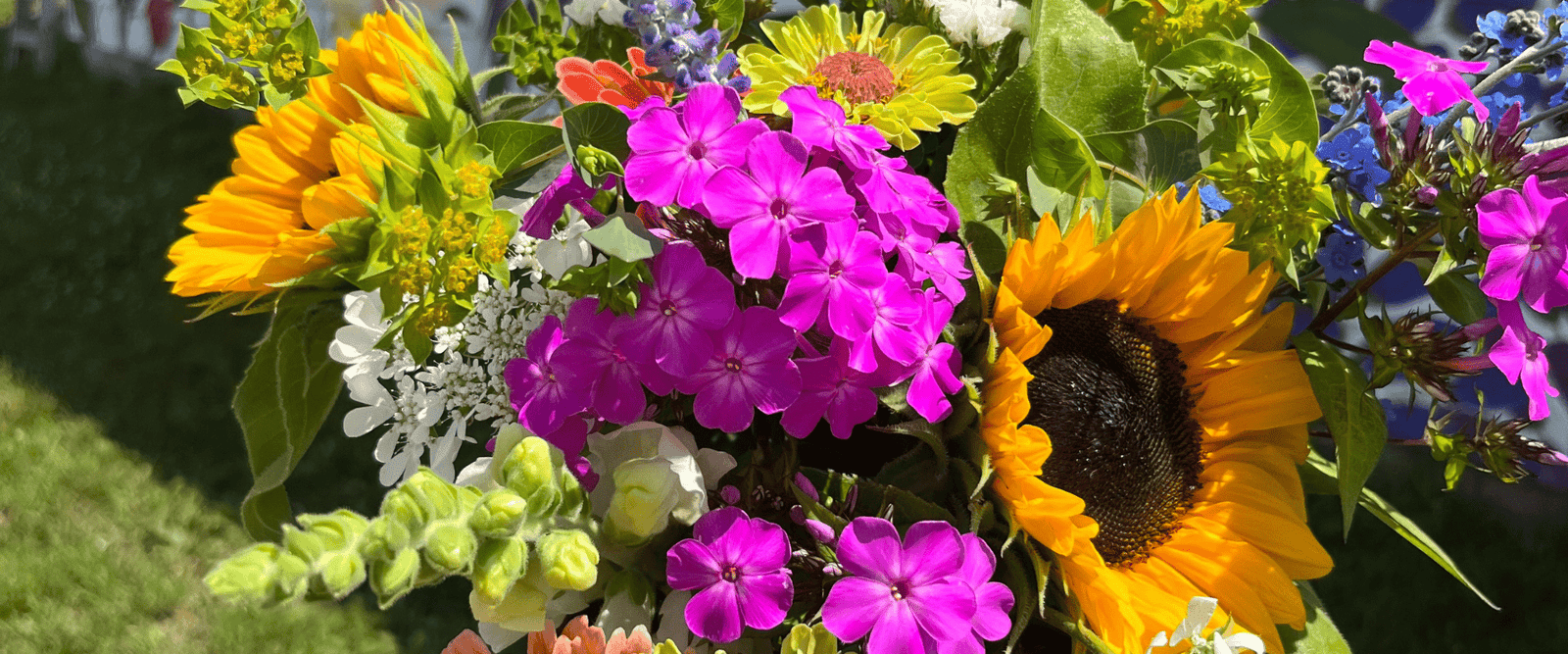
This week, I want to discuss how I turned my hobby of growing cut flowers into a business. The Sunny Mary Meadow story is a complex one, but somehow each step (actually, let’s say PIVOT) led me to where we are today.
If you haven’t checked out Episode 1, I would suggest going back because it’s the foundational starting point for all of these blog posts. I did my best to explain cut flower farming and the conditions I grow in. I want you to have a little bit of a map in your mind of how things work and know the tools at my disposal. For example, when I talk about my walk-in cooler, I want you to say, “Oh, that’s the 70-year-old enormous refrigerator that her late husband’s great grandpa used to butcher cows in.” It’s not fancy, but it gets the job done. You just have to put your hip into it when closing the door, and it helps if you grunt when you need to heave it open.
We touched on this briefly in Episode 1, but ultimately, I am widowed. I am also engaged to be married again in the fall of 2023, so I’m not really sure how that status works. Am I still considered a widow? Legally, I will go back to filing married on my taxes (score for a better deduction again!), but I guess it’s always going to be a part of who I am. I don’t believe in moving on but moving forward, and Josh is always going to be a part of me and who I am. I want to get a little bit deeper into the story and how these circumstances led me to where the farm is now.
My late husband, Josh, and I both grew up on farms. I grew up on a cow/calf operation in southwest Minnesota that raised beef cattle, and he grew up on a dairy farm in Stearns County, which is in central Minnesota. We both knew that agriculture was important to us. Farming was important to us. All of our friends and family were doing it, but we just didn’t know if we wanted that to be our primary source of income. It’s a lot of work to farm. You are married to it. Your life really revolves around it, and we both were unsure if that’s what we wanted.
He worked as an agriculture lender. When he passed away, he was a team leader, which meant that he managed a team of ag loan officers. He worked for a company that lends money to farmers. It was a pretty stressful job, but he was really good at it and well-respected. Most importantly, he absolutely loved it because he got to help other people be really successful on their own farms. He took pride in that he had a bit to do with making a successful farm or business more successful through the help he gave. Even though he wasn’t farming, he was still making an impact on what he loved. I have my doctorate degree as a nurse practitioner, and I recently put in my notice at my job. As I write this, in February of 2023, I have two weeks left of family practice medicine as an NP, and I will be cutting back to just one day a week doing virtual urgent care visits from home. This is primarily because I am growing my cut flower business very rapidly, and it’s going really well. This isn’t a spontaneous decision, and I have been weighing the pros and cons of it for almost a year. This is a move I need to make if I want to continue to see where Sunny Mary Meadow can go.

We got married in 2014, and in 2016, we ended up moving out to his family farm, which somewhat unexpectedly came up for sale. We never knew it was going to be an option to live there until we were offered to buy it. It is 40 acres and is the original piece of the farm that was established in 1888 by his great-great grandpa. Timing wasn’t great, as I was in year 2 of a 5-year grad program, but we knew we had to find a way to make it work. The house was original to the farm, making it just shy of 130 years old. We knew that it would definitely need some work, so let’s just say there’s a reason no one else wanted to move into that house.
We decided just to buy it and fix it up a bit cosmetically so we wouldn’t hate living there while we saved up to build. His aunt and uncle helped us tremendously, and we painted every square inch of that house. We changed some light fixtures and put some cheap, thin boards over the crumbling plaster in the closets and rooms upstairs so they could actually be used because, for all intents and purposes, the entire upstairs of the house really hadn’t been lived in for about 20 years. Our goal was to build new within 10 years, with 2026 being that deadline. We had our first daughter in 2017 while I was in grad school, and I earned my doctorate degree in 2019. We finally had some time to breathe a bit and start to dream about what we actually wanted our life to look like on the farm. I started my job as a nurse practitioner in December 2019. Life was good. We got chickens that fall, and we were dreaming about what we were going to do with the farm. Four months into my job as a nurse practitioner, COVID happened. We were home a lot, and I began to start a cut flower garden because I knew we were going to be spending way more time at home. I had always cared for my perennial plants but never took the space to specifically grow cut flowers. When I told my husband I was going to spend a few hundred dollars on flower seeds, he responded, “Well, we aren’t going on any vacations with everything being shut down, so go for it.”
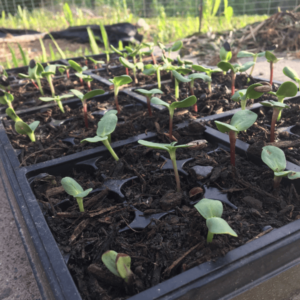
We always had a huge vegetable garden and did a lot of canning, but I wanted to devote a specific space for cut flowers. I dedicated an entirely new garden space to it and was just planning to grow them for a hobby at that point. I had no idea people would pay money for them, and that certainly wasn’t my plan. I bought some seeds where I could find them because, it turns out, everyone decided to get into gardening that year, and there were shortages everywhere. I also bought some start plants at the local nursery, learning my lesson that not all varieties are meant for cutting. I found out that some plants are genetically modified to be shorter to look better in a pot, and definitely don’t translate to good vase life. I stumbled across an Instagram account with a farm stand at the end of her driveway where people came and bought flowers. This caught my eye because it definitely brought back some nostalgia from my childhood. Growing up in Lake Benton, an intersection a quarter of a mile from my parent’s farm was unofficially nicknamed “Honey Corner.” A lady named Valentina lived there (actually, it was Walentyna, but I guess assimilation happened), and she had a small bee farm. She sold her honey in a self-serve stand with signs saying, “Take the Honey, Leave the Money.”
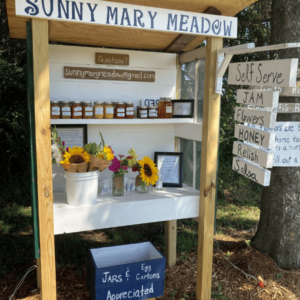
I came up with a similar quote: “Put your money in the slot. Don’t have correct change? Just give what you’ve got. Settle up the next time you stop. Your honesty will keep this stand open.” We started setting out flowers, and people could purchase them as they drove by. We also obtained our cottage food license in MN, which means we could sell homemade goods without being subject to state inspection or having a food preservation license. Our plan was simply to pay for our hobby and see what people liked. That was our entire business plan.
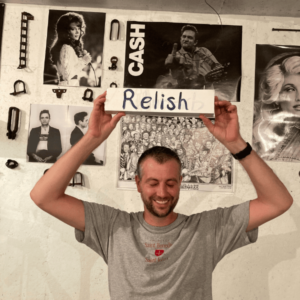
That previous February 2020, my grandma ended up moving to a nursing home. She had a heart condition called amyloidosis. It’s an autoimmune disease that ultimately leads to heart failure. It was fatal, and she had months to live by the time she was diagnosed. She was only in her 70s, which was especially difficult because her husband (my grandpa) had been in the same nursing home for 20 years at that point after getting severe neuropathy from diabetes related to his colon cancer. We always knew his health wasn’t great, but it was entirely unexpected when we realized that grandma was likely going to die first.
Because COVID just started right when she moved in, her nursing home facility didn’t allow any visitors, and residents were isolated. She couldn’t even have a maintenance staff member enter her room to hang her pictures on her wall. Rightfully so, she was very frustrated and, ultimately, quite lonely. She was literally spending her last few months of life alone. As a healthcare professional, I entirely understood that with so little known about the virus, efforts were being made to keep everyone safe. However, as grandma had a terminal illness, it was even more challenging not to let her decide on what risk she was willing to take. She ended up passing away in June 2020.
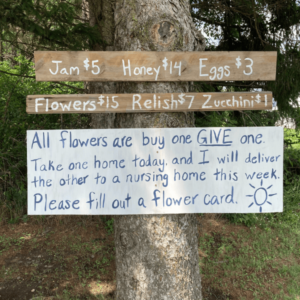
On the way home from her funeral, we had about a four-hour drive back into Minnesota from South Dakota. I was thinking about the other residents in her facility and, quite honestly, all nursing home residents who were still alone. I worked in a nursing home from sixth grade through high school and college and knew firsthand what the lonely days would be like inside the facilities. I was trying to find a way to spread some cheer, and I decided that I wanted to bring some flowers in her memory.
I decided to find ways to get others involved. I knew I would have extra flowers anyway, so I launched a “Buy One, Give One” campaign. For every bouquet I sold, I would donate a second one. I charged $15, so essentially, these flowers were $7.50 each before tax or anything. Every week, I picked a different nursing home and delivered anywhere from 8-15 bouquets to residents. I ended up selling 201 bouquets and donating the same amount. It really was a beautiful tribute to my grandma and hopefully brightened some days.
In that first season, we had canned goods and farm fresh eggs and flowers down on the farm stand at the end of our driveway every day for about 3 months straight. We would put everything down there and keep track of the inventory. We kept track of what was gone and the money that came in. Occasionally we would be short by as much as $15, but the next day that amount showed up. At the end of the season, all said and done, we were $9 over what it should have been. It was quite humbling to know that nobody robbed us, and all said and done, there were good people who really looked out for it all. At the end of that season, September 2020, I told Josh I wanted to see where things could go with this. We didn’t know what growth was going to mean, but we were going to do it organically, slowly, and see where things led.

The logical next step was to continue with the flowers. I had about 30 customers that bought flowers multiple times over the summer, and they wanted a subscription, or CSA, for the next year. So, I set up a few options of weekly or bi-weekly flowers for the following summer, and 30 customers paid me ahead for the next season. I used that money to buy about 1,000 tulips and would use the rest to purchase seeds and equipment for expanding the garden. Our entire business model was going to be based on slow and organic growth, and we simply wanted to see if we could create a manageable side hustle that always stayed a side business. We thought it would take at least 3-4 years to really see any profit, and in the first few years, we would just reinvest back into the business. We also were mindful of the fact that COVID would end eventually, and we wouldn’t be spending our days at home all summer.

Well, it turns out, it doesn’t really matter what our plan was. That wasn’t God’s plan. Two days after our daughter’s third birthday, my husband Josh died unexpectedly of a heart attack while exercising. A few days after the funeral, I found out I was pregnant with our second child, whom we had been trying to conceive for a year.
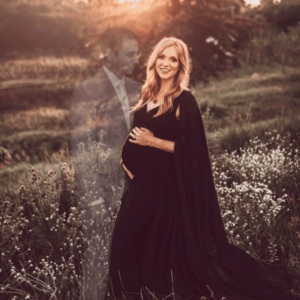
Not surprisingly, I thought I would throw in the towel on the flower farm. I had no idea how I was even going to get the lawn mowed, let alone manage a business and grow flowers. After Josh died, I added “email and refund all subscription holders” to my never-ending to-do list.
A few months after he died, in February 2021, I got an email from a stranger. He said he wanted to place an order for 200 Easter bouquets to be delivered to three different nursing homes. Honestly, I thought it was a mean joke. How the heck was I supposed to do this? I don’t even have flowers at that time of year.
I found out it wasn’t a joke. He was the owner of Hilltop Healthcare, and they wanted to give all of their residents a bouquet for Easter. I quickly responded back to him that I was flattered he thought of me, but unfortunately, I don’t have flowers that time of year, and I wouldn’t be able to do it. He responded, “You’re a terrible saleswoman. How do other people get flowers at that time of year?”
If you know anything about me, it’s that I pride myself on my ability to figure things out. Don’t challenge me or tell me I can’t do something. This enormous project will be its own podcast/blog post, so stay tuned for all those details. Long story short, I said I was going to do it (without any real idea how), and my existing customers rallied together, and I ended up having to cut off sales at 300 total bouquets. This was all in April 2021, and it was the first thing that really brought some hope for the future.
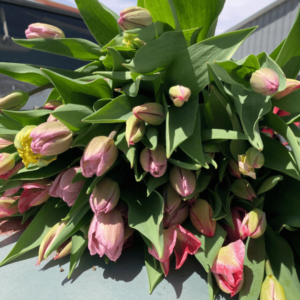
My tulips bloomed around May that year, and I had my summer subscriptions. I got my flowers planted and opened the farm stand when I could. I had a ton of volunteers that year to get the garden in, and people were showing up with tiny shovels and gloves to help or bring lunch. My customers, neighbors, and friends were all so invested in my success that they did anything they could to help me succeed. I pretty much just had subscriptions and would open the farmstand intermittently with a social media post saying, “Hey, I’ve got flowers today!” because I couldn’t commit to it consistently. At the end of 2021, my second season of growing flowers, I ended up selling over 1,000 bouquets, which was five times as many flowers as season one.
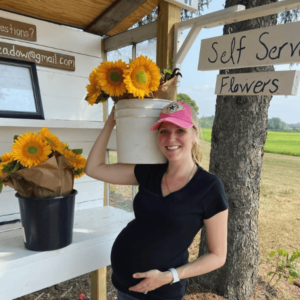
I gave birth to our second daughter, Davie, in August 2021. I was able to slowly clean up the flower fields, and I ended up planting around 4,000 tulips that fall to prepare for my third season of growing. Season three was all about aggressive growth and reinvesting in my business. I still worked as a nurse practitioner three days a week and hired consistent help to get everything done. I surpassed 3,000 bouquets between subscriptions, stem bars, and custom orders. Stem bars are essentially a ton of buckets of cut flowers where people can create their own bouquets at both the farm and local breweries. They really took off because of the timing of COVID ending; people are looking for experiences to do with friends, and I think it brings more value to the product than just picking up a market bouquet at a grocery store.
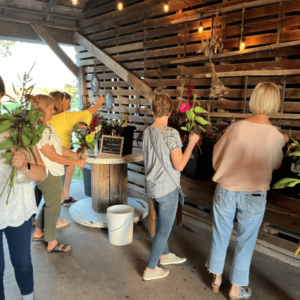
A couple of really big media outlets covered my farm story, and I simply didn’t have enough flowers to serve each customer. I knew if I wanted to continue to grow the business, I needed to be here more. I began to explore alternative career options and ended up giving my notice at my family practice job as a nurse practitioner to focus on the business. My employer was able to find a position for me to work one day a week as a nurse practitioner from home, giving me a safety net if I ever changed my mind about my career choice.
This past winter, I purchased a high tunnel, essentially a greenhouse that uses the sun as its heat source, allowing a month of early blooms in the spring and two months in the fall because it protects from frost. This will be huge as my growing season is typically May 15th to September 20th for most annuals.

We are now entering season four of growing (2023), and I have one main employee that is going to be here with me this year. I have a ton of other volunteers and will look at adding additional employees as needed during busy weeks. We are focusing on using that to add flowers that can bloom much earlier. I’m adding a lot more cold, hardy annuals or flowers that can be planted as soon as the grown is no longer frozen and they can tolerate some frost. This, along with the high tunnel, will give more season extension and bridge the gap from tulip season to the annuals blooming. I just want to have my own flowers consistently from April to November – and I’m doing my best to figure out how.
As I write this, it is March 2023. I am newly engaged again, and my “boyfriend” Brent has been upgraded from the nickname Flower Farmer Boyfriend to Flower Farmer Fiance. We are getting married in October of this year, and I’ll end season four of flower farming by growing flowers for my own wedding.
I look forward to writing future paragraphs on the story of the Sunny Mary Meadow farm. It will be interesting to see where things go from here… I hope that you enjoyed following along with the written version of the Sunny Mary Meadow Podcast. If you like what you’re hearing, please subscribe and rate us. You can also find us on Instagram, Pinterest, and Facebook.
You can subscribe to our email newsletter below. We love to hear any podcast-related feedback at our email podcast@sunnymarymeadow.com, and all other inquiries can be sent to liz@sunnymarymeadow.com.